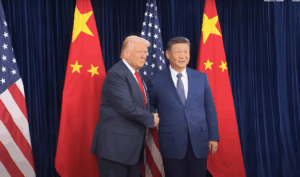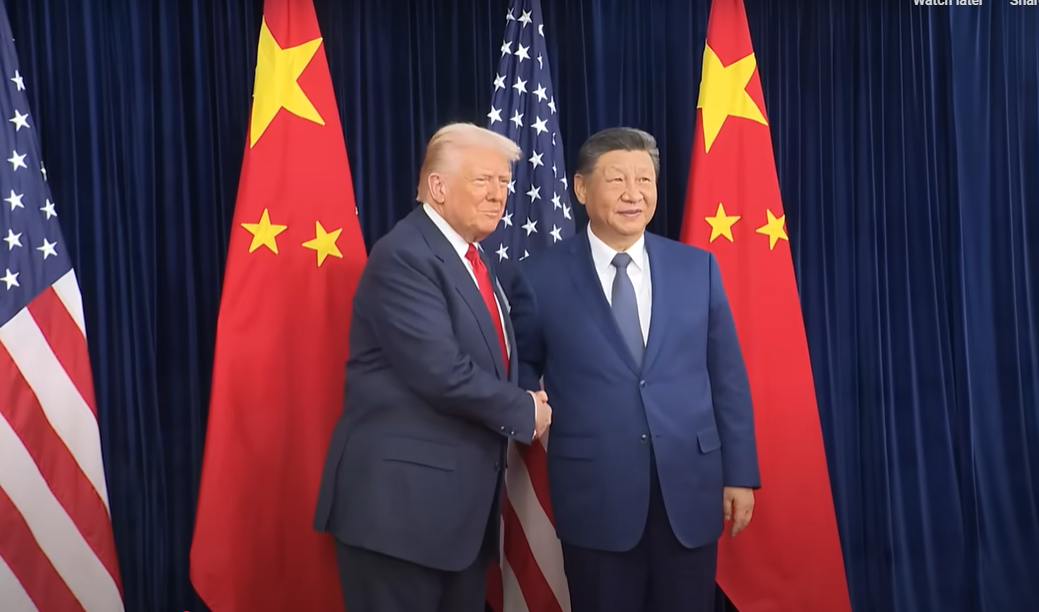
President Donald Trump and President Xi Jinping met in Busan this week for a 90-minute summit that resulted in a temporary easing of trade tensions between the United States and China. While not a comprehensive agreement, the outcomes mark a shift in tone and the beginning of what U.S. Treasury Secretary Scott Bessent described as a “framework for broader cooperation.”
Agricultural Commitments
The most specific commitment came in the agricultural sector. According to Bessent, China will purchase a minimum of 25 million metric tons of U.S. soybeans annually for the next three years. In addition, other nations are expected to acquire an additional 19 million metric tons during the same period. Initial purchases, starting with 12 million metric tons from this year’s harvest, have already been confirmed by China’s state-owned buyer COFCO.
This represents a critical development for U.S. farmers, particularly in the Midwest, following multiple years of uncertain market access and erratic pricing conditions.
Supply Chain Impact:
- Increased volumes through Gulf and Pacific Northwest export terminals are expected in the near term.
- Domestic logistics firms may face tighter seasonal capacity as shipments ramp up.
- Input suppliers, seed, fertilizer, and farm equipment, are expected to benefit from improved forward purchasing confidence.
Fentanyl and Tariffs
In exchange for Beijing’s commitment to further reduce the export of fentanyl precursor chemicals, the United States has agreed to cut its fentanyl-related tariffs on Chinese goods from 20 percent to 10 percent. Bessent described this as part of a targeted effort to address the domestic fentanyl crisis, which remains a significant public health issue in the United States.
The U.S. will also suspend a pending rule that would have expanded the Commerce Department’s Entity List to include additional Chinese firms. The gesture is intended to signal restraint rather than a change in long-term policy.
Supply Chain Impact:
- Chemical and pharmaceutical supply chains may experience modest cost relief due to the tariff cut.
- Export controls and scrutiny on Chinese technology firms remain in place, though no new firms will be added for now.
Rare Earths and Critical Materials
China has agreed to suspend its recently imposed export controls on rare-earth materials for one year. These materials are essential for a range of industries, including defense, clean energy, and electronics manufacturing.
Supply Chain Impact:
- Short-term relief for U.S. and allied industries dependent on lanthanides and other critical inputs.
- However, no indication was given that China plans to lift restrictions permanently or expand rare-earth output quotas.
Technology and TikTok
China has approved a framework for the transfer of TikTok’s U.S. operations to a new corporate structure. The agreement involves American investors holding six out of seven board seats, with ByteDance retaining less than a 20 percent ownership stake. The algorithm will be operated under U.S. security supervision.
No final implementation date has been confirmed, but Bessent indicated that progress should be visible “in the coming weeks and months.”
Supply Chain Impact:
- Minimal immediate effect on physical supply chains.
- Digital infrastructure providers and content oversight entities may see increased activity as the transition unfolds.
Energy Cooperation and Nuclear Strategy
In a development that was not anticipated by U.S. negotiators, Xi Jinping expressed unilateral interest in a U.S. pipeline project in Alaska. No formal proposal has been submitted.
Separately, Bessent acknowledged that the U.S. currently trails China in nuclear power development, but stated that plans are underway to scale up domestic capacity. The Biden administration had also pursued advanced nuclear initiatives prior to the current administration’s term, but most have remained in pilot stages.
Supply Chain Impact:
- Potential future activity in nuclear component supply chains, particularly for reactor fuel and structural materials.
- No immediate infrastructure commitments were announced.
Market and Policy Outlook
Reactions from financial markets were muted. Analysts noted that while the tone was constructive, few substantive changes have been finalized. According to commentary from Goldman Sachs, the meeting produced “expected outcomes, but little beyond that.” Some initiatives, such as TikTok and rare earths, appear to be tactical delays rather than long-term resolutions.
Trump indicated plans to visit China in April 2026 to pursue a broader trade agreement. Both sides have agreed to continue discussions, with Bessent suggesting that the coming months will determine whether temporary arrangements can evolve into formal trade policy changes.
Conclusion
The Trump-Xi meeting delivered a short-term de-escalation of specific trade and security tensions, notably in agriculture and pharmaceuticals. For U.S. supply chains, the soybean purchase agreement provides meaningful clarity for producers and exporters. However, on core structural issues, such as technology access, industrial policy, and critical materials, the agreement amounts to a pause rather than a resolution. Whether this develops into a stable trade framework will depend on progress over the next several months.












